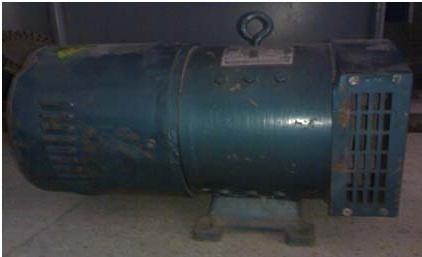The most widespread such machine as a synchronous motor was in industry, where there are electric drives operating at constant speeds. For example, compressors with powerful engines, pump drives. Also, a synchronous motor is an integral part of many household appliances, for example, it is in the watch.
The principle of operation of this machine is quite simple. The interaction of the rotating magnetic field of the armature created by alternating current and magnetic fields at the poles of the inductor created by direct current is the basis of the principle of operation of such an electric device as a synchronous motor. Typically, the inductor is located on the rotor, and the anchor is on the stator. Powerful motors use electromagnets as poles. But there is also a low-power type - a permanent magnet synchronous motor. The main difference between synchronous and asynchronous machines is the design of the stator and rotor.
Asynchronous mode is often used to accelerate the engine to the level of rated speed. In this mode, the inductor winding is short-circuited. After the motor reaches its rated speed, the rectifier supplies direct current to the inductor. Only at rated speed can a synchronous motor operate independently.
Such an engine has a lot of advantages. It is an order of magnitude more complicated than an asynchronous machine, but this is offset by a number of advantages. One of the main advantages is its ability to work without the consumption or return of reactive energy. In this case, the engine power factor will be equal to one. Under such conditions, a synchronous AC motor will load the network with an exceptionally active component. A side effect will be a reduction in the size of the motor (for an induction motor, the stator winding is calculated for both active and reactive currents). However, a synchronous motor can also produce reactive energy, working in the mode of overexcitation.

A synchronous electric motor is much less sensitive to power surges and power surges. Also, such electric machines have a higher resistance to overloads. By increasing the excitation currents, the overload capacity of the motor can be increased. The advantage of working with a synchronous machine is also a constant nominal speed of rotation under any load (except for overloads).
Undoubtedly, such a machine as a synchronous motor has its weak points. They are associated with increased costs and complex operation. The main problem is the process of excitation of the electric motor and its introduction into synchronism. Thyristor pathogens, which have a much higher efficiency than electric machine pathogens, are now widely used. However, their cost is significantly higher. Using a thyristor switch, you can solve many issues: the optimal regulation of the excitation currents, maintaining a constant cosine phi value, monitoring the voltage on the tires, regulating the stator and rotor currents in emergency conditions and during overloads.